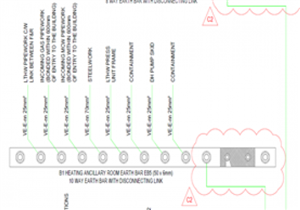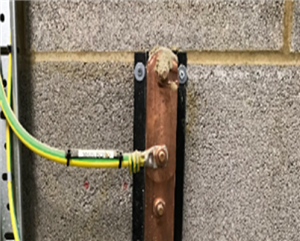Just a quick question on the attached snippet from a drawing - basically for an energy centre and on their earthing schematic all earth bars are shown as follows:


The big text above is the drawing revision text saying the change was deliberate.
I would have thought the above is not right - the main conductor should be connected to the other side of the disconnecting link.
What they have done on site is install a different earth bar as follows:

Disconnecting link is wrong way round?
I am not sure of the rationale behind this?
Any ideas?
